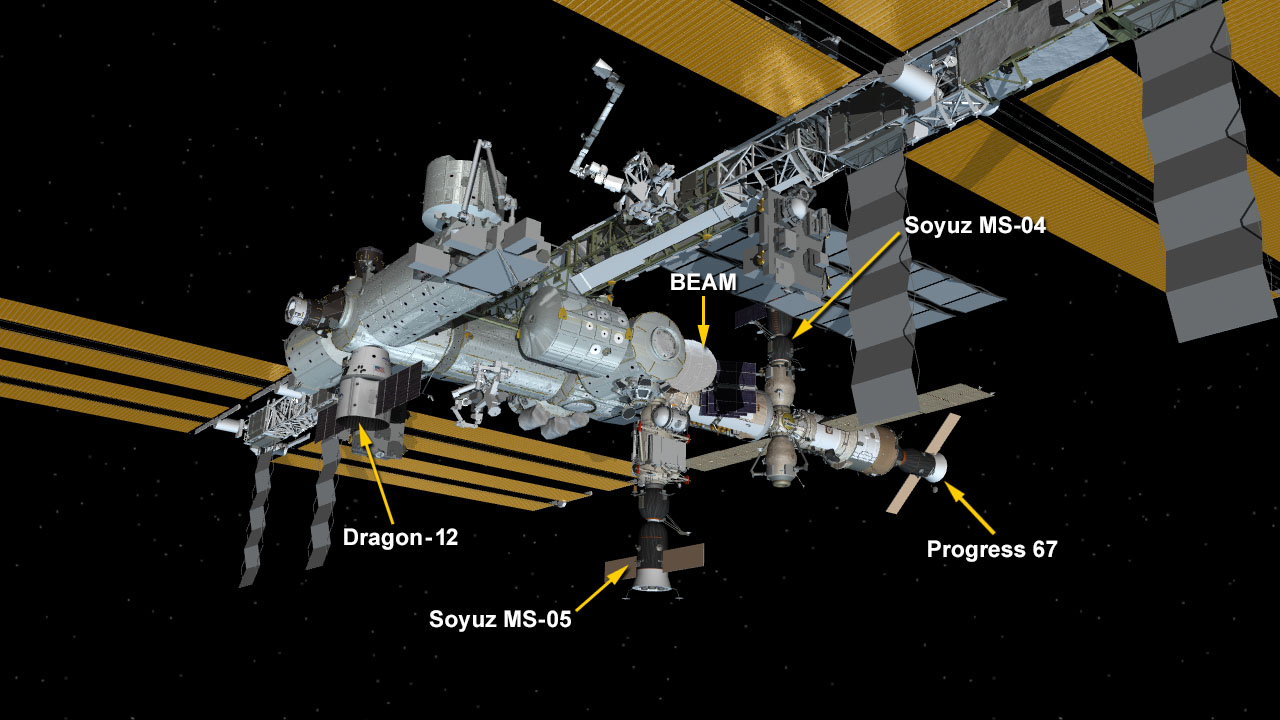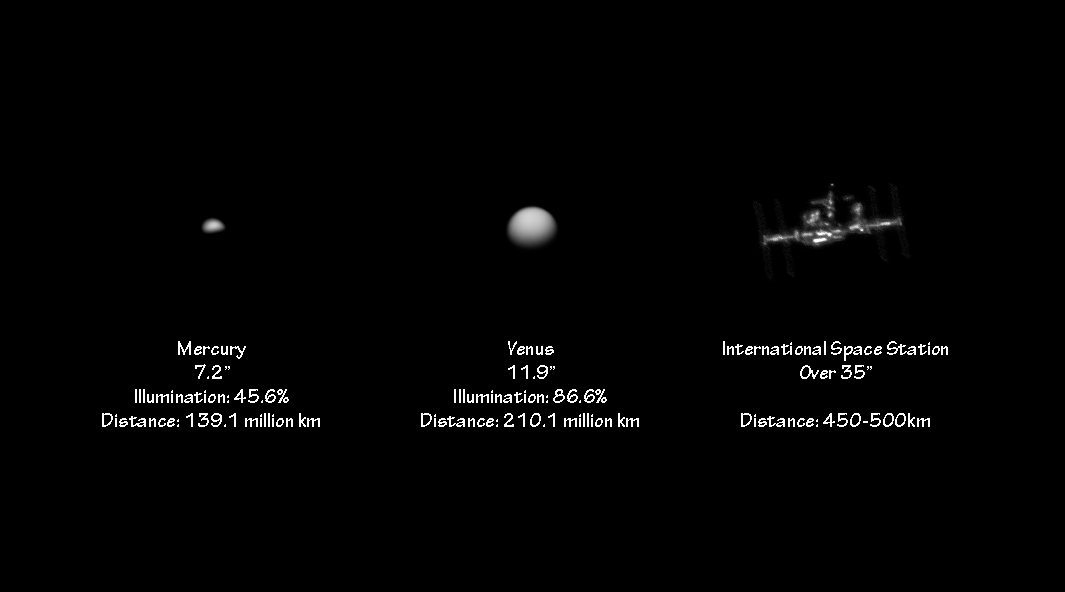Posted by: Szabolcs Nagy
Comments:1
Cosmic comparison – Mercury, Venus and ISS
It was a very early start today with a few tasks in my head that I wanted to accomplish – mainly planetary related. Now I can say it was a relatively successful session, I did everything what I have planned and the final results very pretty good too. At least I am satisfied with it.
Had a nice ISS over head pass between 5:17am – 5:23am. Since I was struggling lately with Fire Capture (it’s been updated to the latest version which caused some problems), today I have managed to sort out the problem and now I am hoping to get back to normal. On the best frames I could spot the Dragon CRS-12 cargo vessel, also the Soyuz MS-04 and Progress–67 cargo spacecrafts.
Than I turned my scope toward Mercury. I’ve been planning to catch this planet for a while now and the last days were just ideal for imaging due Mercury’s position in the sky. It is relatively far from Sun, but being the innermost planet in our Solar System it never gets too far off which makes Mercury a very very difficult imaging target. I did my best and here is the final result.
After Mercury I turned my attention toward Venus. A bright enough and high enough object at the moment, took a few videos as well.
But what is this cosmic comparison thing?
I have never really compared celestial objects with man made objects before, so today seems to be the day…
Angular diameter or apparent size is the way to determine accurate size of celestial objects. Astronomers use a measurement system to determine how large/small and object appears on the sky. Measurement units are arcminutes (‘) and arcseconds (“).
Since I was using the same equipment with the same camera settings, here is a representation how big these objects appear in the sky. We are talking about comparison of apparent size, this is not a real size comparison! Usually people can not imagine how large/small ISS looks from Earth during early morning/evening passes, but search no more!
This photo represents the current situation as it was today (Mind that every planet has an ever changing angular diameter, depending on their distance from Earth and their own size).
Equipment:
Skywatcher 250/1200 Flextube dobson
Zwo ASI120MM mono camera
TeleVue 2.5x powermate
Zwo Red filter
Manual tracking
12/09/2017



1 comment
God bless you